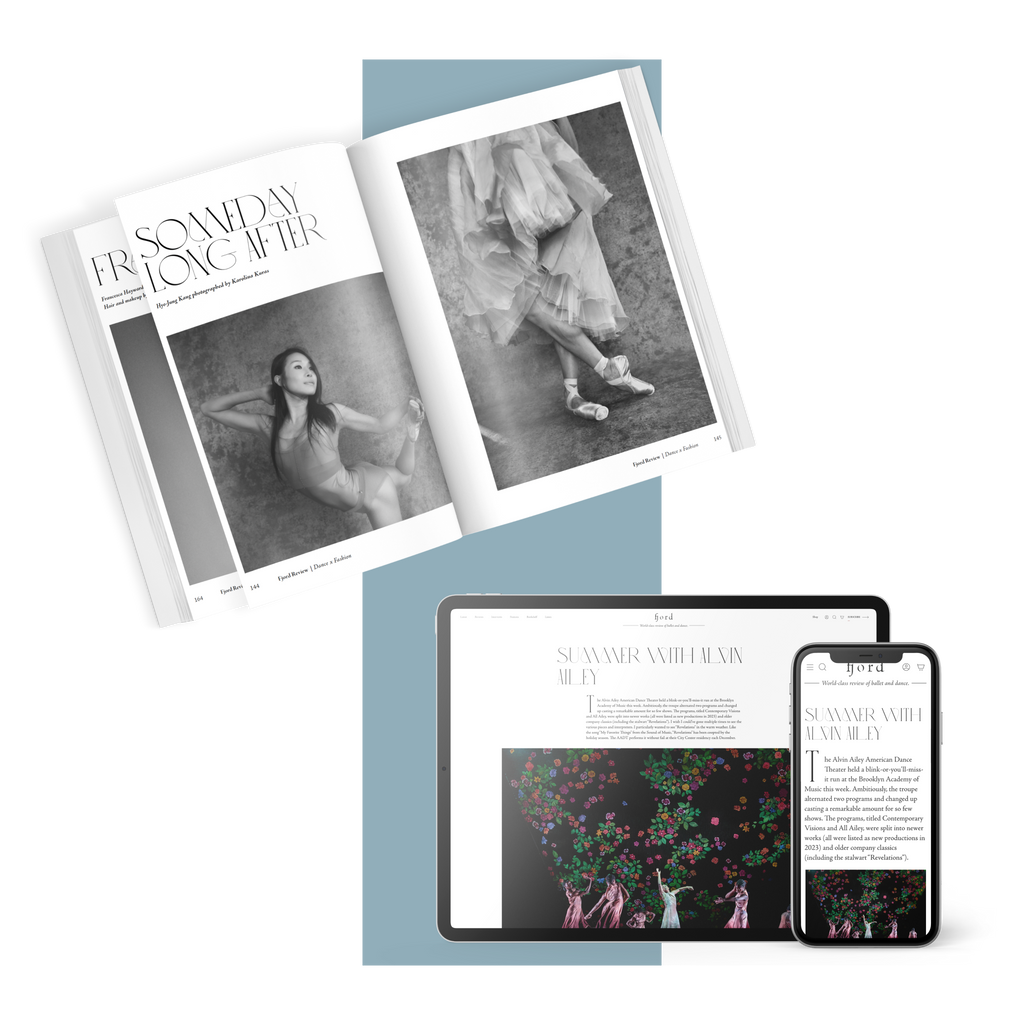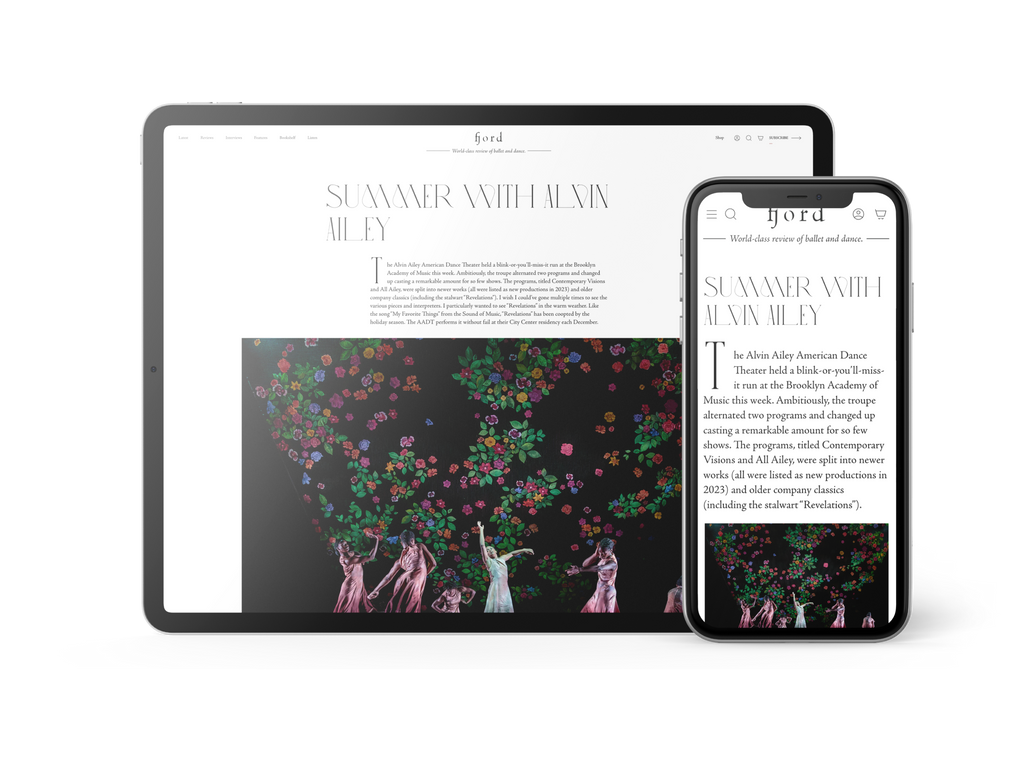Natural Histories
Miriam Miller steps into the center and raises her arm with deliberation, pressing her palm upward to the vaulted Gothic ceiling of the cathedral.
Continue Reading
World-class review of ballet and dance.
There is an ineffable poignancy, a sense of subtle melancholy even, to this immersive and moving piece, “Bodies of Water” created by Saffy Setohy, Aya Kobayashi, Nicolette Macleod and Joanna Young for family audiences. It is dancers Setohy and Young who perform, and invite the audience into a quiet, dark but cosy space for interaction and dance. Tables are festooned with little clay pots created across Scottish communities over the course of a year. As pairs, we too are invited (with eyes closed) to create little makeshift pots of clay, something to contain water.
Performance
Place
Words

Saffy Setohy in “Bodies of Water.” Photograph by Julia Bauer


“Uncommonly intelligent, substantial coverage.”
Your weekly source for world-class dance reviews, interviews, articles, and more.
Already a paid subscriber? Login
Miriam Miller steps into the center and raises her arm with deliberation, pressing her palm upward to the vaulted Gothic ceiling of the cathedral.
Continue ReadingIn a series called “Just Dance” on Nowness—a site I sometimes visit to see what’s up in the world of “genre busting” dance films that make it onto this stylized platform—I sometimes find little gems that quietly rock my world.
Continue ReadingBack in October, New York City Ballet got a new cowboy. His arrival occurred in the final section of George Balanchine’s “Western Symphony.”
Continue ReadingWhen Richard Move enters from stage left, his presence is already monumental. In a long-sleeved gown, a wig swept in a dramatic topknot, and his eyes lined in striking swoops, the artist presents himself in the likeness of Martha Graham—though standing at 6’4, he has more than a foot on the late modern dance pioneer.
Continue Reading
comments